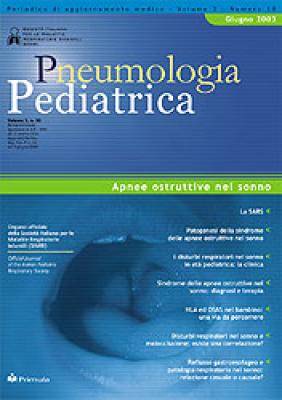Archivio > Vai alle uscite del 2003 > Vai aVolume 3, Numero 10 - Giugno 2003
- Apnee ostruttive nel sonno
Patogenesi della sindrome delle apnee ostruttive nel sonno Pathophysiology of obstructive sleep apnea syndrome

Riassunto. La fisiopatologia della sindrome delle apnee ostruttive (OSAS) nel sonno risulta complessa e solo parzialmente nota in età pediatrica. Basti pensare che la funzione delle vie aeree superiori è regolata da 30 paia di muscoli che interagiscono tra loro.
In sintesi possiamo descrivere l’eziopatogenesi dell’OSAS come un fenomeno multifattoriale dove tre principali fattori si combinano variamente fra loro: l’anomalia strutturale delle alte vie, il diminuito controllo neuromuscolare, l’ipertrofia adenotonsillare. Accade così che, ad esempio, un bambino con ipertrofia adenotonsillare ma con un buon controllo neuromuscolare e/o una struttura stomatognatica appropriata possa non sviluppare una sindrome ostruttiva.
Summary. Physiology of obstructive sleep apnea syndrome in children still remains poorly understood. Indeed, the upper airway function is complex and involves more than 30 pairs of muscles. The multifactorial etiology is due to varied combinations of three main factors an altered airway structure, a diminished neuromuscular drive and increase in lymphatic tissue. Therefore, it can likely happen that a child with adenotonsillar hypertrophy but with high neuromuscular drive will not develop an obstructive syndrome.






